

The secret to a successful bathroom remodel is solid planning, both to determine what you want from the space and to know what to ask the designer. Here, three professionals answer the key questions.
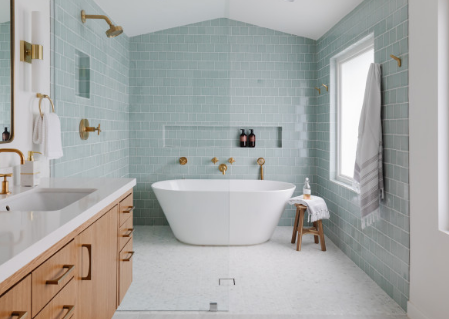
Cat Hoad of Absolute Project Management says, “As a starting point, you have to think about the key factors first. “Do you necessarily want a bathtub, or not necessarily if you have a good shower? Is a toilet or Japanese-style toilet a ‘must-have’? Do you have to have a lot of cupboards for your linens, or is it just convenient for bathroom items?
If you’re installing a shower, the design you want also needs to be evaluated as early as possible. Do you prefer a bathroom style with flush floors, or do you prefer a low shower tray or cubicle? Wetroom style is often possible, but be aware that it is more expensive and more intrusive.
Sara Levy of Sara Levy Designs, says, “Wet room floors look wonderful and stylish, with only a single piece of glass separating the shower from the rest of the room, but are more expensive than using a shower tray in terms of materials and labor. “However, we also prepare our customers for the fact that water can also spill out of the trays, so we use waterproofing and waterproofing the floor around the shower area.”
“Another thing to keep in mind when using an open shower is that you’ll feel the cold air in the bathroom, so you should plan your heating accordingly,” says Levy.”
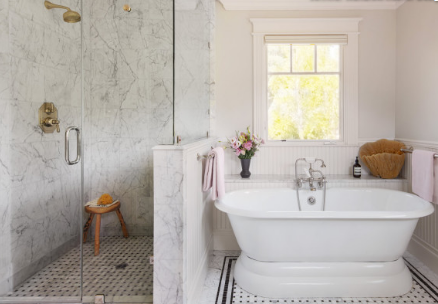
Functionality is crucial, of course, but so is the way you want your bathroom to feel. Think about whether you want it to be a relaxing space or a quick shower area, and how you want it to look, whether it’s modern or traditional.
Try to make a mood board of styles, materials, and colors so you can understand what works for you as a whole and more easily communicate your vision to your designers.
“You don’t need to follow trends,” Levy said. “Choose items that make you feel good in the space.” A designer can help you design wall and floor coverings, colors, faucet shapes, bathtub sizes, and finishes.
Can I change the layout? Will changing the piping system be too costly or disruptive?
“Bathroom designers will know if it’s feasible to change the layout,” Levy says. “For example, you may not be able to swap out a bathtub for a low-level shower tray – it depends on the plumbing underneath, and sometimes you won’t know until you’re looking behind an existing bathroom panel. Typically, though, you can raise the shower tray up a small step to create a proper slope in the waste. ”

To some extent, how much you can change the layout will depend on whether you live in a detached house or apartment, how it’s built (wooden joist floors or solid concrete slabs), the location of existing soil pipes, and whether it’s feasible, Hodder said. Move them (economically and practically).
Explore whether mobile features will improve mobility and functionality in your bathroom. “If you’re paying a designer to look at the space, it might be worth getting them to consider whether other layouts are viable, even if you think they’re not possible,” Hodder said. “We can often ‘find’ space by using a previous fence or ‘borrowing’ space from adjacent unused areas to increase our options.”

“Bathroom lights can be tricky because they need to be IP [ingress protection] rated,” says Emma Merry of Emma Merry Styling. “As a rule of thumb, you have to think, if I can splash it with water, it has to be a sealed lamp. [In the small bathroom], I always specify to turn off the lights due to steam and moisture.
“If space is at a premium, then a lamp in a closet or a smart mirror is an effective way to solve that problem,” Merry said. “I also often find some great alternative bathroom lights in the exterior lighting section.”
Consider using different lights for different moods. “If your budget allows, use multiple lighting circuits,” Levy said. “We often use low-brightness night lights on the sensor so that you don’t need to turn on the main light at night.”
When installing an electrical outlet, consider adding a shaving socket to charge your electric toothbrush, she says.
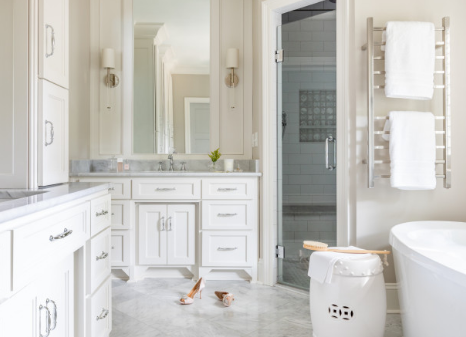
Since your bathroom floor may be a cool, hard surface, it’s worth considering underfloor heating. Hodder recommends pairing it with a towel radiator.
“Ideally, ducted [wet] underfloor heating. But for tight spaces, an electric [dry] with a good control system can work well,” she said. “We almost always recommend using some sort of dual-fuel radiator towel rack so it can be heated through the central heating system for months of operation, and it also has an immersion electric heating option so you can still dry your towels in the summer.”
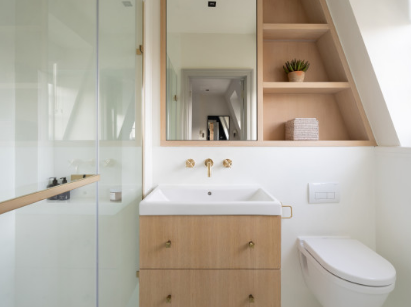
The key to keeping your new bathroom smart is having good storage space, so think about what you’d like to put in it – sheets and towels or just toiletries? Don’t ignore the space because it’s too small before talking to a designer, as they may find a place to squeeze into.
Storage space for cleaning supplies, toilet paper and toiletries can be placed under, next to or above the basin, the toilet and even behind the bathroom panels. “Also think about any personal belongings you might want to store. For example, we recently made a small cabinet with a heater specifically for our customers’ swim trunks.”
“We want to maximize storage space in any area where pipes are hidden and so on,” Hodder said. You can get fairly inexpensive freestanding ready-made cabinets. But if you want a more luxurious option that makes the most of every millimeter of space, you need a custom storage design.“

“It’s going to be more disruptive than you think,” Mr. Hold said. “Unless it’s a very simple like-for-like replacement, it will take at least a few weeks.
Even if a builder only works in a small bathroom, there are many different trades involved (plumbers, electricians, decorators, tilers). Hod said that before the room was ready to install the bath and shower room, they needed somewhere (probably not the bathroom) to store the tools and materials for the bath and shower room.
“Let’s say your builder needs to turn off water and power at some point during the demolition process and should give you enough notice,” Levy said. “However, even if the rest of the room is empty, they should be able to leave you a usable toilet every night.”
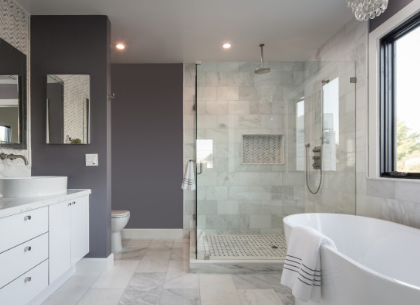
All experts agree that the key is to make a list of everything you need and may need.
Consider the cost of any reconfiguration, electrical, plumbing, tiling and finishing for the builder, as well as the cost of fixtures, Hodder said. “Don’t forget about tiles, storage and accessories such as toilet paper holders and shower racks.
“I suggest you create a spreadsheet,” Merry said. “Listing each one from start to finish – it’s tedious, but I promise it will pay dividends.
If your water pressure isn’t high enough for a large shower head, but you do want one, you can ask your builder to add a pump, Levy says. But it also affects the budget.
Levy also points out the importance of including less obvious factors. “Make sure your installation estimate is a detailed, written estimate, including the materials used. Also check if the walls and floors are waterproofed… as well as ground leveling steps to ensure that the tiles will not crack in the future.
“Also make sure there’s room for demolition and waste cleanup, and set aside contingency funds for issues that may arise once the works start or projects that you want to add,” she said.
As bathrooms become more and more of a “sanctuary,” you may also want to bring in some tech devices like TVs or smart systems including lighting, music and remote-controlled curtains, so take that into account when planning your budget, Hoad says.